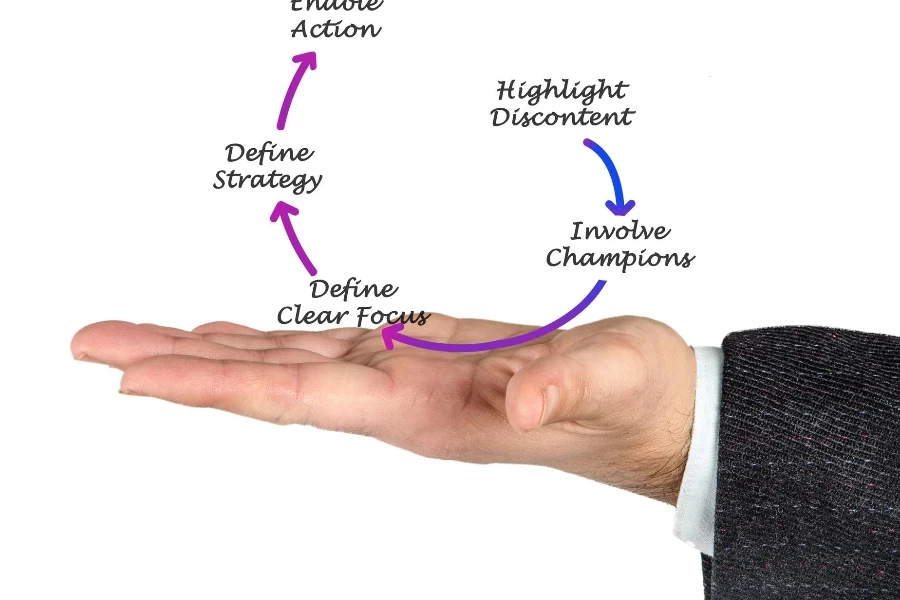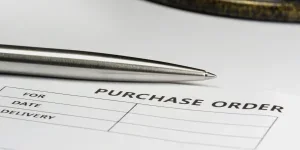In the complex world of business transactions, the term “purchase order” frequently surfaces, yet its full importance often remains unexplored. This article aims to demystify the concept of a purchase order, illustrating its critical role in business operations and how it can significantly streamline procurement processes. By breaking down the concept into digestible explanations, we invite you to explore the multifaceted benefits and the operational framework of purchase orders.
Table of Contents:
– What is a purchase order?
– The anatomy of a purchase order
– The lifecycle of a purchase order
– Benefits of using purchase orders
– Implementing purchase orders in your business
What is a purchase order?

A purchase order (PO) is a formal document issued by a buyer to a seller, outlining the types, quantities, and agreed prices for products or services. Serving as a legally binding contract, it authorizes the sale and is pivotal in managing inventory and controlling spending within a company. This section aims to introduce the basic premise of a purchase order, setting the stage for a deeper exploration of its components and lifecycle.
The inception of a purchase order begins with the buyer identifying a need within their organization. This need triggers the procurement process, where a purchase order plays a central role. It acts as a safeguard, ensuring that both parties have a clear understanding of the transaction details, thereby minimizing potential disputes.
Understanding the significance of a purchase order extends beyond its basic definition. It embodies a commitment and facilitates a smoother transaction flow, acting as a cornerstone in business operations. As we delve deeper into its anatomy and lifecycle, the operational benefits and strategic importance of purchase orders will become increasingly evident.
The anatomy of a purchase order

A purchase order is more than just a piece of paper; it’s a meticulously structured document that contains several key components. Each element plays a crucial role in ensuring the clarity and efficiency of business transactions. This section highlights the fundamental parts of a purchase order and their significance.
Firstly, the purchase order number (PO number) is a unique identifier that is crucial for tracking and managing orders. It simplifies the process of referencing and locating specific transactions, making it easier for both the buyer and seller to stay organized.
Additionally, the purchase order includes detailed descriptions of the products or services being ordered, including quantities, prices, and specifications. This level of detail ensures that both parties have a clear understanding of the expectations, reducing the likelihood of errors and misunderstandings.
Lastly, terms and conditions are an integral part of the anatomy of a purchase order. They outline the agreement’s legal aspects, including payment terms, delivery dates, and warranty information, providing a comprehensive framework for the transaction.
The lifecycle of a purchase order

The lifecycle of a purchase order is a dynamic process that encompasses several stages, from
creation to closure. Understanding this lifecycle is essential for managing business operations effectively and ensuring smooth transactions. This section outlines the key phases of a purchase order’s lifecycle.
The first stage involves the creation and issuance of the purchase order by the buyer. This step formalizes the buyer’s intent to purchase and sets the transaction in motion. Following this, the seller reviews and accepts the purchase order, acknowledging the terms and agreeing to fulfill the order as specified.
Once the goods or services are delivered, and the buyer verifies that they meet the agreed specifications, the purchase order enters the final stages. These include invoicing by the seller, payment processing by the buyer, and, ultimately, the closure of the purchase order. Each stage is interconnected, forming a comprehensive process that ensures the transaction’s success.
Benefits of using purchase orders

Implementing purchase orders within a business operation offers numerous advantages. This section delves into the tangible benefits that purchase orders provide, emphasizing their value in streamlining procurement processes.
One of the primary benefits of using purchase orders is the enhanced control over spending. By requiring formal approval before any purchase, companies can better manage their budgets and avoid unauthorized expenditures. This level of oversight is crucial for maintaining financial health and ensuring resources are allocated efficiently.
Furthermore, purchase orders contribute to improved record-keeping and documentation. The formalization of transactions through purchase orders creates a comprehensive paper trail, facilitating easier tracking and auditing. This not only aids in financial management but also in compliance with regulatory requirements.
Lastly, purchase orders strengthen supplier relationships by establishing clear communication and expectations. This clarity minimizes disputes and builds trust, laying the foundation for long-term partnerships that can lead to better terms and pricing.
Implementing purchase orders in your business

Integrating purchase orders into your business operations may seem daunting, but the process can be straightforward with the right approach. This section provides practical steps for implementing purchase orders, ensuring a smooth transition and maximizing their benefits.
The first step involves establishing clear procurement policies, including guidelines for when and how purchase orders should be used. Training staff on these policies and the overall importance of purchase orders is crucial for ensuring compliance and effectiveness.
Adopting suitable software or systems for creating and managing purchase orders can significantly streamline the process. These tools not only simplify the creation and issuance of purchase orders but also enhance tracking and record-keeping.
Lastly, fostering open communication with suppliers about the adoption of purchase orders is essential. Clarifying expectations and working together to address any concerns can facilitate a smoother implementation and strengthen supplier relationships.
Conclusion:
Purchase orders play a pivotal role in business operations, offering a structured approach to procurement that benefits both buyers and sellers. By understanding and implementing purchase orders, companies can enhance operational efficiency, control spending, and foster stronger supplier relationships. Embracing this tool is a step towards streamlined, effective business management.




